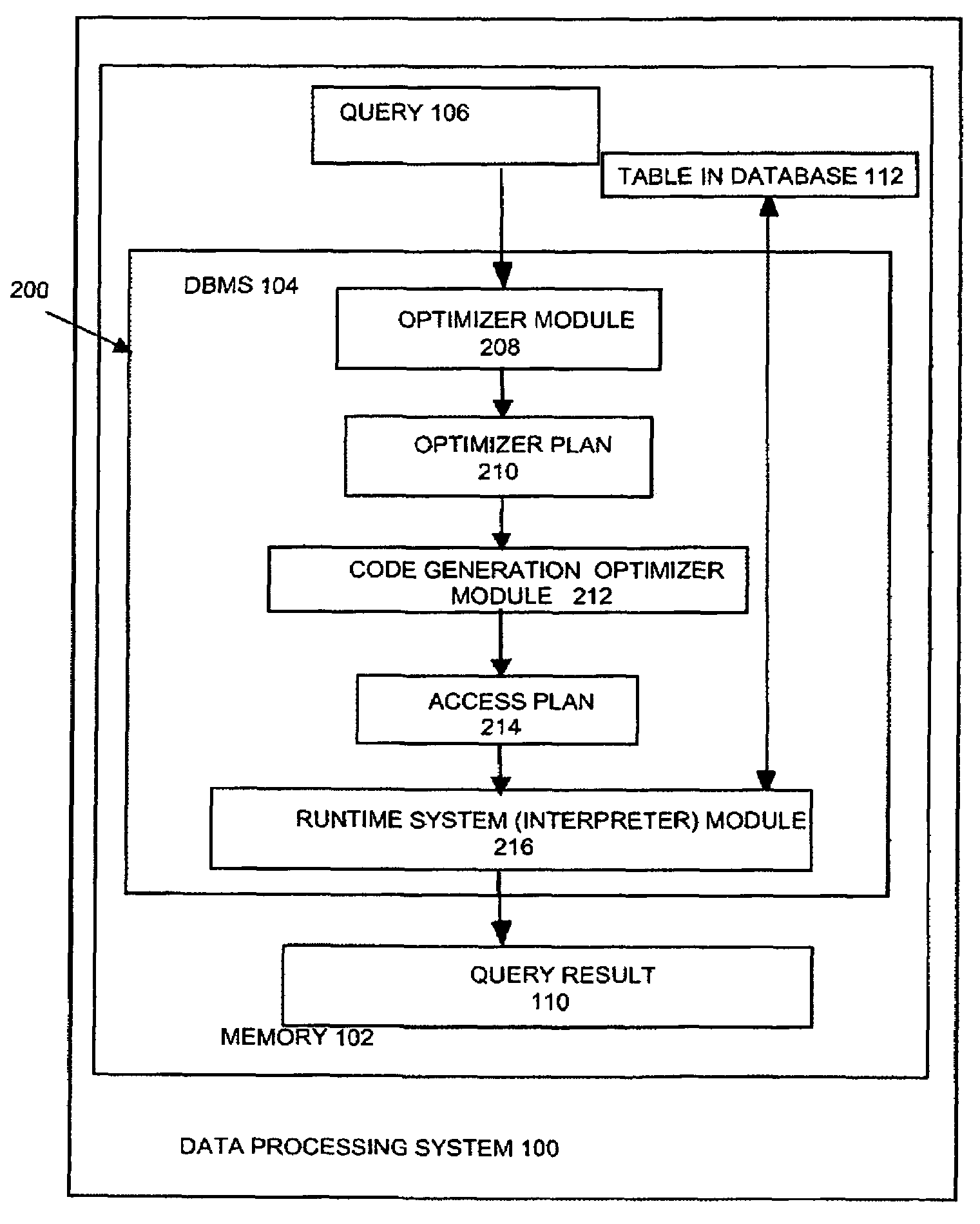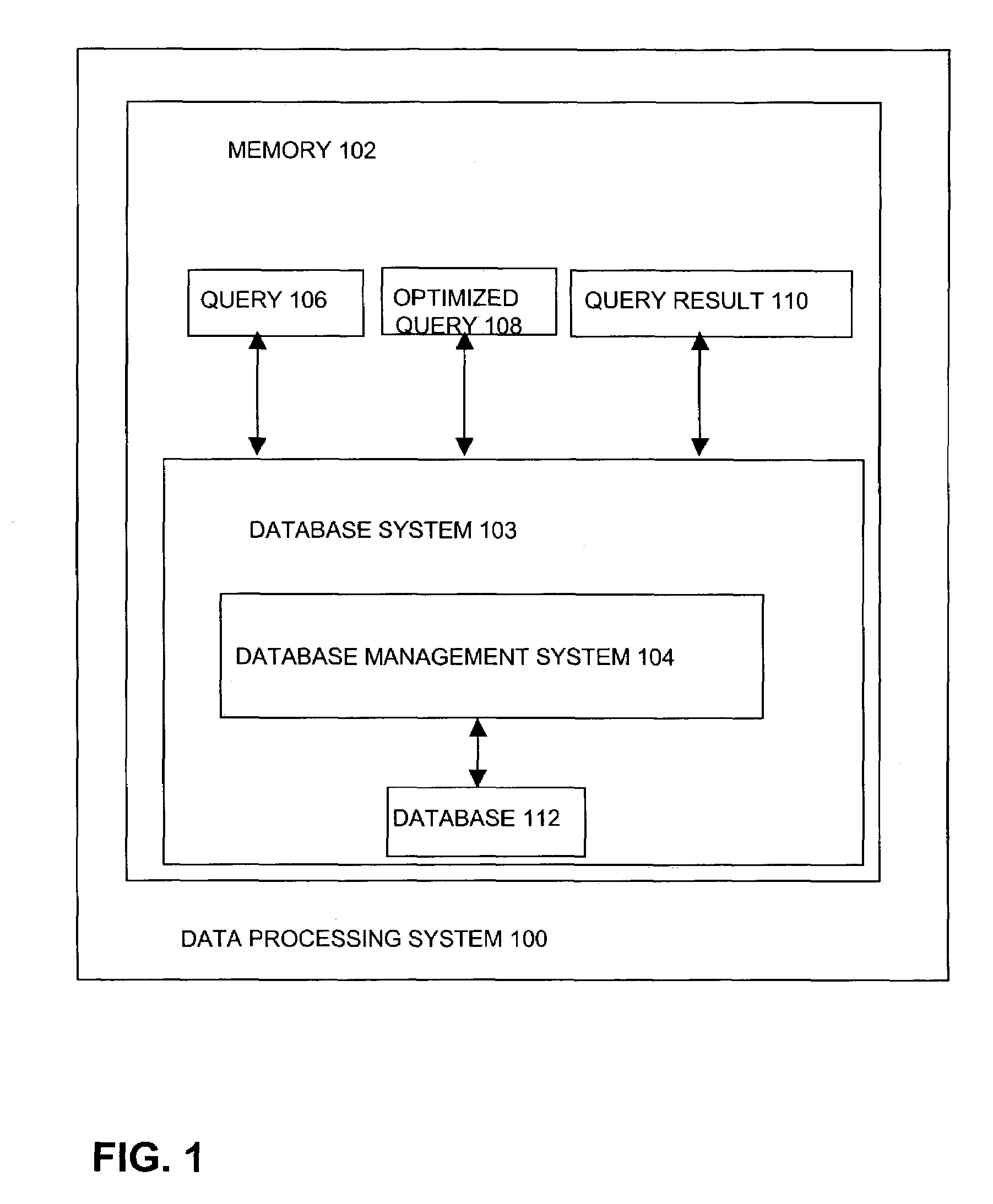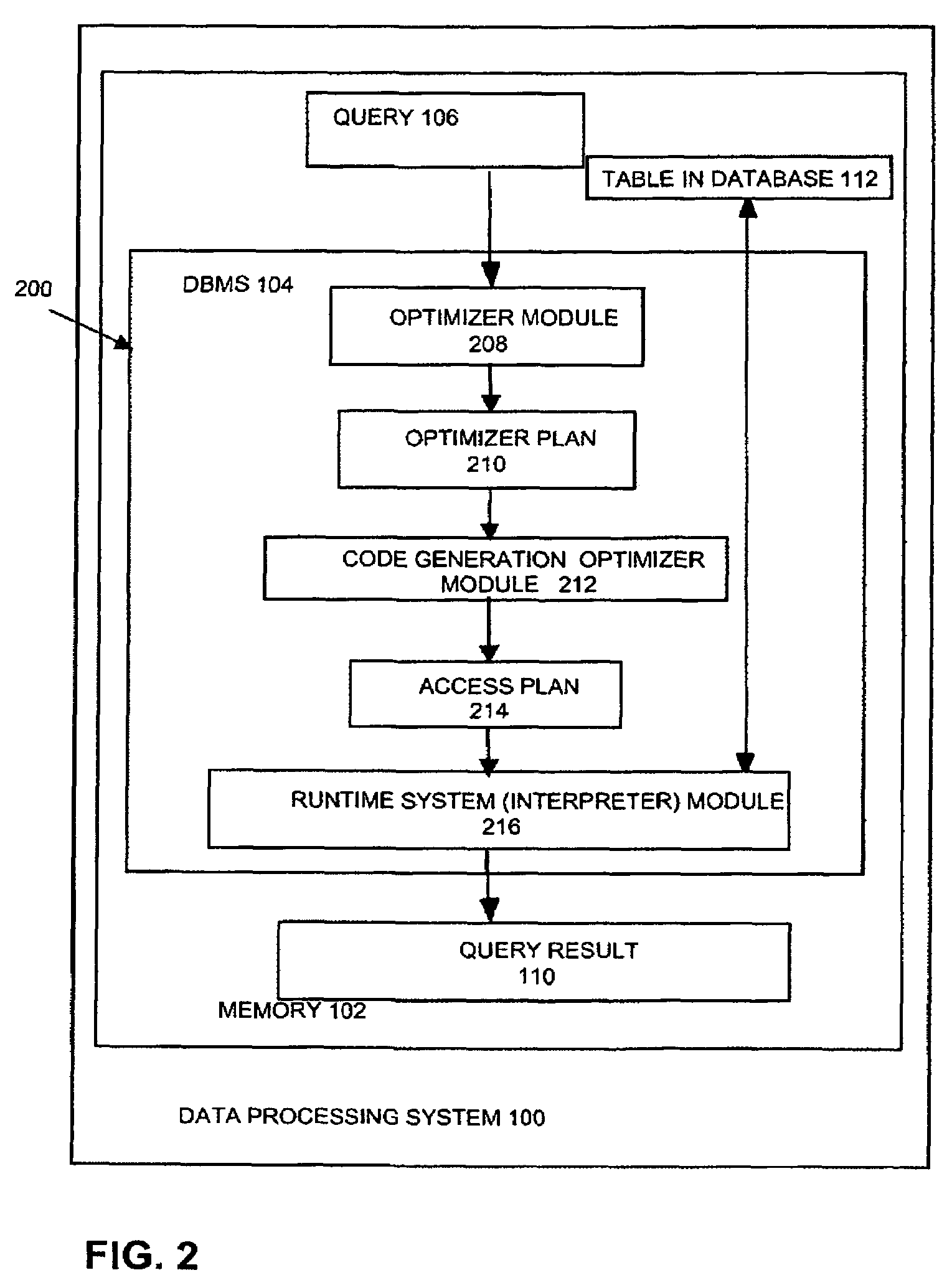Information retrieval method for optimizing queries having maximum or minimum function aggregation predicates
a technology of information retrieval and optimization methods, applied in the field of information retrieval systems, can solve the problems of limiting the use of known query merging techniques for optimizing, affecting the efficiency of query processing, so as to improve query processing efficiency
- Summary
- Abstract
- Description
- Claims
- Application Information
AI Technical Summary
Benefits of technology
Problems solved by technology
Method used
Image
Examples
Embodiment Construction
[0029]The following detailed description of the embodiments of the present invention does not limit the implementation of the invention to any particular computer programming language. The present invention may be implemented in any computer programming language provided that the OS (Operating System) provides the facilities that may support the requirements of the present invention. An embodiment is implemented in the C or C++ computer programming language (or other computer programming languages in conjunction with C / C++). Any limitations presented would be a result of a particular type of operating system or computer programming language and would not be a limitation of the present invention.
[0030]FIG. 1 shows a database system 103 that comprises a database management system (DBMS) 104 and a database 112. Database system 103 is stored in the memory 102 of a data processing system 100. The database system 103 may be shipped or installed without the database 112 to or by end users....
PUM
 Login to View More
Login to View More Abstract
Description
Claims
Application Information
 Login to View More
Login to View More - R&D
- Intellectual Property
- Life Sciences
- Materials
- Tech Scout
- Unparalleled Data Quality
- Higher Quality Content
- 60% Fewer Hallucinations
Browse by: Latest US Patents, China's latest patents, Technical Efficacy Thesaurus, Application Domain, Technology Topic, Popular Technical Reports.
© 2025 PatSnap. All rights reserved.Legal|Privacy policy|Modern Slavery Act Transparency Statement|Sitemap|About US| Contact US: help@patsnap.com



